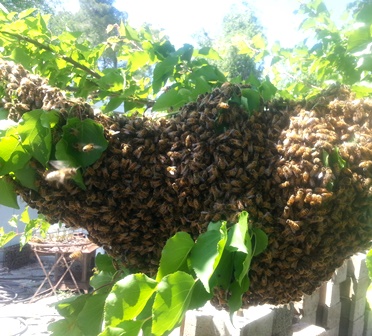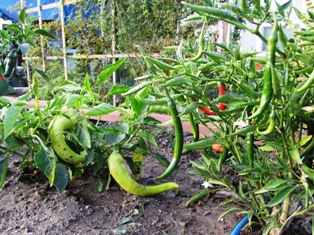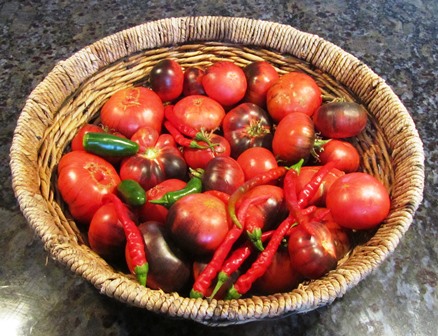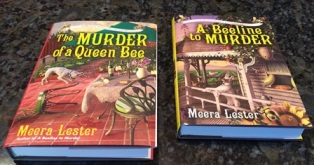Archive for April, 2016
A Nutritious Drought-Resistant Bean for Your Garden
What kind of bean crop will perform in a garden during drought and in less-than-desirable soil? Try tepary beans (one of the Three Sisters of Native American tradition—squash, corn, and beans). See images of tepary beans at: http://shop.nativeseeds.org/collections/tepary-beans
There is precedent: Native American tribes of the desert Southwest cultivated food crops in dry and often nutrient-deficient soil. They used companion plantings of squash, corn, and the drought-resistant tepary bean (Phaseolus acutifolius) in mounds along with dead fish for extra nitrogen.
Tepary beans are among the most drought-resistant beans in the world; they are not descended from the common bean (Phaseolus vulgaris). They contain higher amounts of protein than the common bean and come in a variety of colors, including white, tan, butternut gold, black, and even speckled.
Pour a tea of fish emulsion mixed with water to give your tepary beans a little boost of nitrogen to help them take off if you’re planting them in nutrient deficient garden soil.
Of course, having bees around to pollinate your Three Sisters plants is a plus. The Tewa and other tribes of the desert southwest referred to the Rocky Mountain bee plant (Cleome serrulata) as the Fourth Sister because the plant attracts bees.
If you enjoy reading about gardening, keeping bees, raising chickens, creating delicious recipes with a bit of murder along the way, check out my cozy mystery offerings from Kensington Publishing, available online and in tradition bookstores everywhere in hardcover, kindle, and mass market paperback. See, http://tinyurl.com/gnnqr8z
The Murder of a Queen bee will be released September 29, 2016 in hardcover and kindle formats. See, http://tinyurl.com/j9vh7vr
Check out Hobby Reads.com’s “How to Make a Lavender-Sage Smudging Stick.” See, http://tinyurl.com/jds38e8
Uses of Herbs in Your House and Garden
Herbs in abundance line the shelves of local garden centers now, and for good reason. Many of these versatile plants are hardy and adaptable and have myriad uses in a landscape.
Cooks, especially, appreciate access to culinary herbs near the kitchen. Grow cilantro, parsley, sage, tarragon, chives, basil, anise, dill, mint, and other desirable culinary herbs in boxes or giant pots on a kitchen patio. The location will make it easy to water and gather them.
Many herbs like chives, sage, and dill re-seed themselves, therefore, consider growing these in containers unless you have a designated space in your garden for them.
For shady areas in a landscape or garden, plant sweet woodruff, Borage, and chamomile. In areas that receive full sun, plant rosemary, mother-of-thyme, caraway-scented thyme, and woolly thyme. In areas that remain moist, plant angelica, mints, parsley, and sweet woodruff.
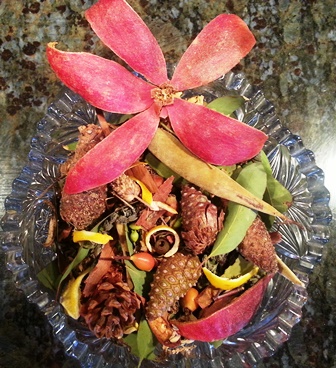
The leathery pomegranate peel takes center stage in this potpourri that utilizes herbs, seed pods, spices, and citrus peels
To grow herbs for potpourris and sachets to scent rooms in your home, cultivate costmary, English woodruff, and lemon-scented herbs like pelargonium and verbena. Also rose geranium and lavender add a lovely scent to mixtures of herbs for potpourri.
With so many different ways to use herbs to beautify a garden or patio and to flavor foods and scent a home, there’s no reason not to grow a few. Remember, herbs (like mint) can be dried for tea or crumbling over salads and you can collect herb seeds or propagate cuttings for next year’s herb garden.
Lemon Oil for Luring Honeybee Swarms
Call it my sixth sense at work, but after my bees acted aggressive (which they usually are not) as I cleaned the water fountain, I prepared the swarm catcher and put it in the apricot tree nearest my office window. Mid-morning on Wednesday, I got my first swarm of 2016.
Lemon oil is often the ingredient that lures the honeybees to a swarm catcher. I mix the lemon oil mixed with water and spray the swarm catcher with a pump sprayer. It usually works better to capture the bees in the swarm catcher than having them coalesce en masse on an inconvenient limb in a tree, say, fourteen feet up.
You can use lemon oil as a salve or in the oil form–apply the salve onto the swarm catcher around the opening for the bees or use the oil in a small plastic vial that gets inserted into a swarm catcher orifice.
Bear in mind that not all lemon oils are equal. Some are more “lemony scented” than others. Lemon oil is cold pressed from the peel and contains 3 to 10 percent citral (considered the most powerful of components that contribute to the lemon scent). Lemon myrtle contains 95 percent citral and, if it’s the scent you want, lemon myrtle is superior to all others.
So, when I realized my bees were swarming, I suited up and prepared a hive box with ten frames, eight with wax from previous honey harvests (where I left the wax intact) and two that I had in the kitchen where I was draining honey from them. It would provide an immediate source of food for the bees in their new home.
Today, I visited my favorite shop for all things honeybees and stocked up on a couple more hive boxes, just in case of another swarm, although the bees are quiet and non-aggressive again.
Plants to Attract Hummingbirds
It’s hummingbird mating season. We’re seeing iridescent males with ruby throats engaged in amazing aerobatic flight patterns to attract females. To draw these birds to our garden, we’ve put in plants they are known to seek out.
To attract them, we’ve planted flowers with brightly colored blooms such as purple-spired agastache, red blooming wild columbine, cosmos (pink, white, and red) scarlet ipomopsis (also known as the hummingbird plant), larkspur (Giant Imperial has colors ranging from pink, dark blue, light blue, carmine, rose, salmon, and white), lobelia (various shades), poppies, and salvia (Fairy Queen has a brilliant purple color).
This morning as I was inspecting the peach tree, a male with a ruby throat perched on a branch right above the branch tip I was holding. I love seeing these little birds who are voracious feeders, consuming daily nearly half their body weight in nectar and feeding from the sugar-water feeders I’ve hung near my kitchen garden window six to eight times an hour.
Many of the above-mentioned plants also attract butterflies. Sow a few of each of these seeds and you’ll have visitors to your garden throughout the spring and summer months (or during each plant’s blooming season).
Planting the Spring Garden
Winter brought us lots of rain and now the ground has warmed up and is ready to receive the heirloom seedlings of our favorite vegetables and herbs.
Tomatoes won’t set fruit until the nighttime temps hover around 55 degrees Fahrenheit, but I tucked in several seedlings of heirloom varieties (Bradley, Cherokee Purple, and Red Beefsteak). Victory Seeds offers a nice selection of open-pollinated, non GMO, rare heirloom seeds for a variety of tomatoes. See, http://www.victoryseeds.com/tomato.html
While I was digging, my neighbor’s bees decided to swarm. So I stopped gardening to check on my own bees. They’ve been humming like a truck engine, and there has been a lot of bee traffic. Concerned that they might swarm, I set aside my shovel and got out the swarm catcher, the lemon oil, and the hand pump sprayer. I positioned the swarm catcher in a tree across the yard, sprayed the tree with lemon oil, and went back to gardening.
I’ve readied a patch of ground for the sweet corn, squash, peppers, and beans. Also, in a large-size planter pot, I’ve tucked in flat Italian parsley, Italian oregano, dill, chives, and sweet basil. The patio pot will remain near the kitchen slider in full sun so I have culinary herbs at the ready when I need them.
The early sweet peas are taking off now and the garlic and onions I put in the garden last fall are about a foot high. The vegetables and herbs I plant now will provide me with plenty of nutritious offerings right up until late fall–one of the many reasons to plant a garden in spring.
Enjoy this blog? Check out my Henny Penny Farmette novels, available online and in traditional bookstores everywhere.
 Facebook
Facebook Goodreads
Goodreads LinkedIn
LinkedIn Meera Lester
Meera Lester Twitter
Twitter









